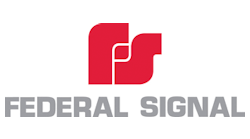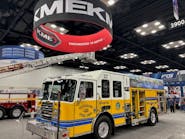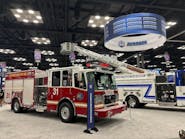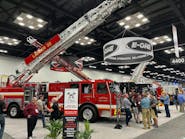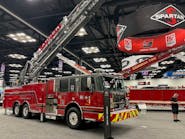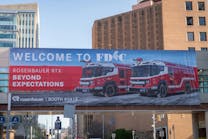Specifying and purchasing fire apparatus is a complex and time-consuming process. Oftentimes, department members or committee members have no experience going through this process because of the low frequency that fire departments replace vehicles. Consequently, there are some common problems and pitfalls many departments experience during this process. This article discusses some of the more common problems and pitfalls and how to avoid them.
Inconsistent attendance at pre-construction, mid-construction and final inspections
While the specification is the foundation for which the apparatus is designed, the pre-construction conference, in-process and final inspections are the insurance that the vehicle is being built as specified. The team that attends the pre-construction conference ideally should be the same group that attends both inspections to maintain consistency. Different attendees may have differing ideas or opinions, which could make for expensive change orders. At a minimum, a designated project manager should attend all three meetings at the factory to maintain consistency throughout the duration of the project.
Communications between department and manufacturer
Throughout the entire apparatus purchasing process, communication between department members and manufacturer’s representatives is frequent and necessary. Occasionally, timely decisions need to be made to keep from disrupting the manufacturing process. For this reason, the department should designate a project manager who will serve as the primary point of contact for the department.
The department should also designate one decision-maker for the project. This person would be the only person authorized to make or approve all decisions related to the purchase of the apparatus throughout the duration of the purchasing and manufacturing process. Ideally, this person would be the project manager but could be somebody of higher authority to whom the project manager reports.
Communication flow between department members and manufacturer’s representatives is critical to the success of a project and should be established at the outset of the project. All communications from the department to the manufacturer should pass through the project manager. Similarly, the manufacturer should only use one person to communicate with the department. Department and committee members must know and understand that all communications with the manufacturer must go through the project manager. Strictly following this communication flow will minimize confusion and misunderstandings that can arise when multiple people contact the manufacturer without using an established chain of communication flow.Relying on a salesperson to write specification
Frequently, departments come to us and ask us to review their specification prior to putting it out to bid. Almost always, we can recognize that the specification was written by a sales representative using their manufacturer’s specification. Proprietary items are almost always included in these documents. Dead giveaways are items that only that manufacturer can offer. Other indicators are dimensions, such as a compartment dimension listed as 24½-inches wide by 61¼-inches tall. Using precise dimensions is a tip-off that the specification was written around a particular manufacturer. Using a manufacturer’s specification will discourage other manufacturers from bidding a project.
Using a specification written by manufacturer does not ensure that the best interests of the department are being met. If a department is going to use a manufacturer’s specification, it would be wise to go through the specification carefully and make sure that all the department’s needs are fulfilled in the document. Reviewing and removing proprietary language from a manufacturer supplied specification would encourage broader participation from prospective bidders.
“We have always done it that way”
Very often apparatus committees are including features and functions in their new apparatus that is on the vehicle being replaced and could well have been on the apparatus before that. This starts a process off building a brand new 20-year-old apparatus that really won’t serve the department or community well. Some of the items we typically see are departments insisting on things like a two-stage pump, power take-off (PTO) driven generator, Vernier throttle on the pump panel (for the record pump panel throttles have not been cable operated since 1990), and most recently Federal Signal Night Fighter flood lights.
Including items like these create problems on several different levels because manufacturers may not be physically able to build what you have specified since the items are no longer available. Committees are not taking advantage of technology changes that can make your apparatus user-friendly. This is especially true with two-stage fire pumps. There was a time in the fire service that everyone had two-stage pumps because they were needed back then. But with today’s diesel motors, and their high horsepower and torque outputs, most fire departments do not need two-stage pumps. Single stage pumps are more than capable, require less maintenance, less training, and are easier to operate.
I had a department insist that their new rescue truck be equipped with 30 kW, PTO-driven generator. Their reason was because “this is what we have always had.” This department did have a substantial electrical load that justified the large generator. However, this department was located very close to an ocean-front community where it was frequently operating in high water areas. It was suggested that a hydraulic generator mounted fairly high on the apparatus might be a better option. The response was “this is what we have always had,” even though the frame-mounted PTO generator had been rebuilt three times because of saltwater contamination.
Chances are that fire districts and personnel today have very little in common with their counterparts from 25 years ago. Available manpower is different and the types of buildings in the coverage area have changed both in construction and use. The department’s annual call volumes have likely increased, and the types of calls have changed, with service demands that were historically low now becoming much more frequent.
Prior to specifying a new fire truck, a Needs Analysis should be completed so the new fire truck is designed and specified to meet today’s needs and future jurisdictional needs. Designing and specifying a fire truck to meet yesterday’s needs is designing and specifying a fire truck that could potentially be a service failure.
What if?
What if we have (pick one, or two, or three) a train derailment, a plane crash, a power outage, a building collapse, multiple car accidents, a school bus accident, propane tank BLEVE, our emergency generator fails, and the list goes on.
The “what ifs” can cripple an apparatus committee because these topics get discussed, ad nauseam and often go off on tangents wasting more time and causing more frustration. Departments should have contingency plans in place for the types of calls listed, which may involve neighboring departments, county resources, or a statewide plan. A new fire truck cannot be specified to handle every imaginable emergency.
Recently, we had a department include in their specifications a high-volume 3 percent/6 percent Class B foam system because they wanted to be able to handle a fuel tanker fire on the highway. What they didn’t take into consideration is that the foam would only last for 27 seconds at the rate of application. Their justification for this foam system was simply “a neighboring department had a tanker fire years ago.”
An example of designing a rescue truck around a “what if” was a department that wanted a 45 kW, three-phase generator because “we need to power up our radio room.” Using the truck to power the radio room would effectively take the truck out of service at a time when it may be needed for other emergencies.
Recently a department wanted two plasma cutters powered by 200 feet of 3/0 electrical cable because they might “have a building collapse.” While these are effective rescue tools, the chances of needing and using two expensive plasma cutter systems simultaneously over the life of the vehicle are remote at best. The “what if” need doesn’t justify the initial expense, the added weight on the vehicle, the technical training needed to use these tools, and the long-term maintenance costs of the system.
The “what ifs” add to cost, both initially and in annual operating expenses, add to the vehicle size, add to the care and maintenance needed, and add training expenses. Many departments now own apparatus that are so big their members are not comfortable driving them and they are usually the last rig out of the firehouse, if they get out at all.
A review of historic emergency calls is a good indicator of what systems are necessary on the new vehicle that is being specified, being mindful of typical manpower available to operate these systems. Design and specify your new apparatus for the work you do or have a high probability of doing, not the “what ifs.”
Unrealistic wants and expectations
Department members can come into this process with a wish list and expectations that are unrealistic. Knowing and understanding the amount of money that is available is a very important piece of the puzzle at the very beginning. Know how much you have available to spend and make your decisions accordingly.
Bigger isn’t always better. Ask if you really need a bigger motor or pump, a longer aerial, or a more powerful generator? Does your department really need what you are specifying? Every item or line in your specification has an associated cost. Every specification item can have a domino effect, which can impact one or more other factors in your apparatus. As an example, a bigger engine may translate into a bigger transmission, which may translate into more robust driveline components, all of which translates into higher costs. Department and committee members must understand that with every item specified, there may be a consequence that ultimately changes the overall design, functionality, and cost of the vehicle.
Outside factors may impact the specification, such as manufacturers that are bound to build the truck following standards and regulations like NFPA 1901, Federal Motor Safety Standards, and others. Physical limitations in the community, like a low bridge, small firehouse, or narrow roads, may dictate limitations on the size of the vehicle and must be considered when developing a specification.
Conclusion
Preparing specifications and purchasing fire apparatus are major undertakings and should be done in an orderly fashion and with an educated decision-making process. Department and committee members should research and evaluate available products and options and then make educated decisions that match the needs of the department and the community. Avoiding the earlier referenced problems and pitfalls that so often occur should help make the specification and purchasing process more orderly and effective.
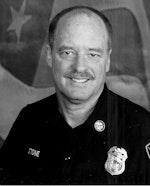
Greg Stone
Greg Stone is a retired 33-year veteran of the Los Angeles Fire Department. His assignments with the department included apparatus and equipment purchasing responsibilities. Additionally, Stone has 25 years of apparatus purchasing experience assisting other departments with their purchasing needs.
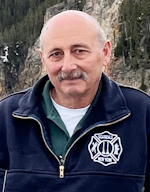
Jeffrey D. Gaskin
Jeffrey D. Gaskin is president of Big Red Trucks Fire Apparatus Consultants. He is a retired captain from the Scarsdale, NY, Fire Department. Throughout his career, Gaskin has been involved in apparatus acquisitions, from needs assessment through specification-writing. He also is a fire apparatus mechanic and holds certifications from Allison Transmission, Detroit Diesel, Hale Pump, Smart Power, Spartan Chassis, Sutphen Fire Apparatus and others. Gaskin is certified by the Emergency Vehicle Technician Certification Commission in six areas: Fire Apparatus Inspection, Maintenance and Testing (F-1); Design and Performance Standards of Fire Apparatus (F-2); Fire Pumps and Accessories (F-3); Aerial Fire Apparatus (F-5); Allison Automatic Transmission (F-6); and Hydraulic Systems (F-8). He can be reached at [email protected].


